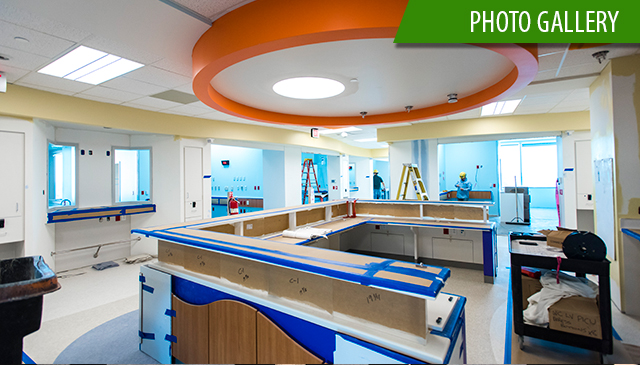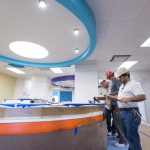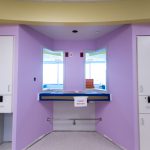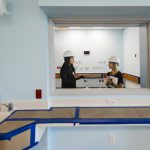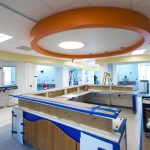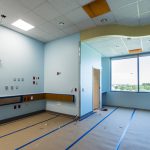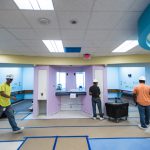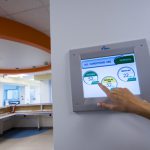Texas Children’s Lester and Sue Smith Legacy Tower recently won the Intensive Care Unit (ICU) Design Award sponsored by the American Association of Critical Care Nurses, the Society of Critical Care Medicine and the American Institute of Architects Academy on Architecture for Health.
Each year, a panel of judges including physicians, nurses and architects from the sponsoring organizations evaluate adult, pediatric and neonatal ICUs around the world. The award is based on several criteria including functional design, integration of technology, and use of innovative, aesthetic and creative design elements that promote an efficient, safe and healing environment for the delivery of critical care.
“We are grateful to receive the ICU Design award,” said Dr. Lara Shekerdemian, Chief of Critical Care at Texas Children’s. “This award is a culmination of four years of hard work, collaboration, creative thinking and meticulous attention to detail that went into the design of our ICU spaces. The award is for everyone at Texas Children’s who, together with our partners at FKP Cannon Design, Bellows, and our amazing family advisory committee, helped us plan, design and seamlessly transition to our wonderful new home – Legacy Tower.”
To create a safe, efficient, and family-centered environment, Texas Children’s involved patients, families and all disciplines of the health care team from day one of the project through its completion in September 2018. From reviewing workflows to participating in patient care simulations before, during and after construction, design requirements were continuously refined to ensure the final layout would meet patient and staff needs.
As part of the ICU Design Award application process, Texas Children’s created a video highlighting our award-winning Pediatric Intensive Care Unit (PICU) and the distinct features that help distinguish our hospital from other pediatric institutions.
The Lester and Sue Smith Legacy Tower has 138 ICU rooms, all with dedicated family space, over seven floors. The new ICU floors include a dedicated subspecialty neuro-ICU, surgical ICU, heart failure ICU and a neonatal cardiac ICU.
Since opening the Legacy Tower PICU in May 2018 and the Legacy Tower Cardiovascular Intensive Care Unit (CICU) in September 2018, patients, families, and our critical care team have benefited from the design features that helped the organization achieve this award.
Patient families
- The overall size of the patient rooms is more than double that of the older ICU rooms, allowing more space for visitors and patient families to remain together comfortably. Each patient room has a spacious private bathroom, complete with a shower for patient and family convenience.
- Patient rooms have large windows that provide more natural sunlight and beautiful views for patients and their families who aren’t able, or rarely leave the hospital.
- Large family lounges sponsored by Ronald McDonald House are on each patient floor to provide space for family members to wait, read, eat, and engage in activities outside a patient’s environment. Family laundry spaces on each floor also offer a much-needed convenience for families.
- Sun-filled respite areas are located throughout the PICU floors to provide families peaceful time to themselves.
PICU Team
- The configuration of the ICU spaces provides care teams with enhanced visibility and monitoring between patient rooms and into the patient rooms from the nurses’ workstations.
- Remote monitoring and carefully designed communication panels enable clinicians to respond quickly to emergencies throughout the ICU areas.
- Patient’s pumps, monitors and ventilators are attached to booms mounted to the ceiling of the room. This allows the patient to be positioned anywhere in the 360-degree circle, and allows medical staff to use high-tech equipment at the bedside while keeping the equipment off the floor.
- Each ICU bed has an LED examination light that enables the teams to carry out intricate surgical procedures at the bedside on the most unstable patients.
- A badge-accessible medication “pass-through”, similar to what you see at a pharmacy drive-through, allows pharmacy technicians to drop off medication to patients without having to enter the patient room, providing more privacy for patients and their family.
- A touch screen safety monitor in each room allows clinicians to call for assistance from the nurse’s station. The technology allows for more efficient communication.
“Our patients and their families are very happy with their new spaces, and we are very excited to be in our new home for critical care in Legacy Tower,” said Gail Parazynski, Vice President of Nursing. “It took several years of planning to get to where we are today. It was a team effort on many different levels to ensure a safe environment of care was cultivated for our critical care staff, patients and their families.”
Texas Children’s will formally receive the ICU Design Award when the Society of Critical Care Medicine convenes for their annual meeting in February 2020.










